|
A.S.S.E.Psi.
web site (History of Psychiatry and Psychoanalytic Psychotherapy
)
A.S.S.E.Psi.NEWS
(to subscribe our monthly newsletter)
Ce.Psi.Di. (Centro
di Psicoterapia Dinamica "Mauro Mancia")
Maitres
à dispenser (Our reviews about psychoanalytic congresses)
Biblio
Reviews (Recensioni)
Congressi
ECM (in italian)
Events
(our congresses)
Tatiana Rosenthal
and ... other 'psycho-suiciders'
Thalassa.
Portolano of Psychoanalysis
PsychoWitz - Psychoanalysis and Humor (...per ridere un po'!)
Giuseppe Leo's Art
Gallery
Spazio
Rosenthal (femininity and psychoanalysis)
Psicoanalisi
Europea Video
Channel
A.S.S.E.Psi. Video
Channel
Ultima uscita/New issue:
"Crisi
ecologica e pandemia. Una sfida per la psicoanalisi"

A
cura di Giuseppe Leo
Scritti
di: Hilda
Catz, Anna Ferruta, Marco Francesconi, Pietro R. Goisis, Robert
Hinshelwood Giuseppe Leo, Nancy McWilliams, Giuseppe Riefolo, Merav
Roth, Cosimo Schinaia, Daniela
Scotto Di Fasano, Robert D. Stolorow
Editore:
Frenis Zero
Collana:
Confini della Psicoanalisi
Anno:
2022
Pages:
268
ISBN: 978-88-97479-36-9
Click
here to buy the book/Compra su Amazon

"Enactment
in Psicoanalisi"
(Edizione Italiana)
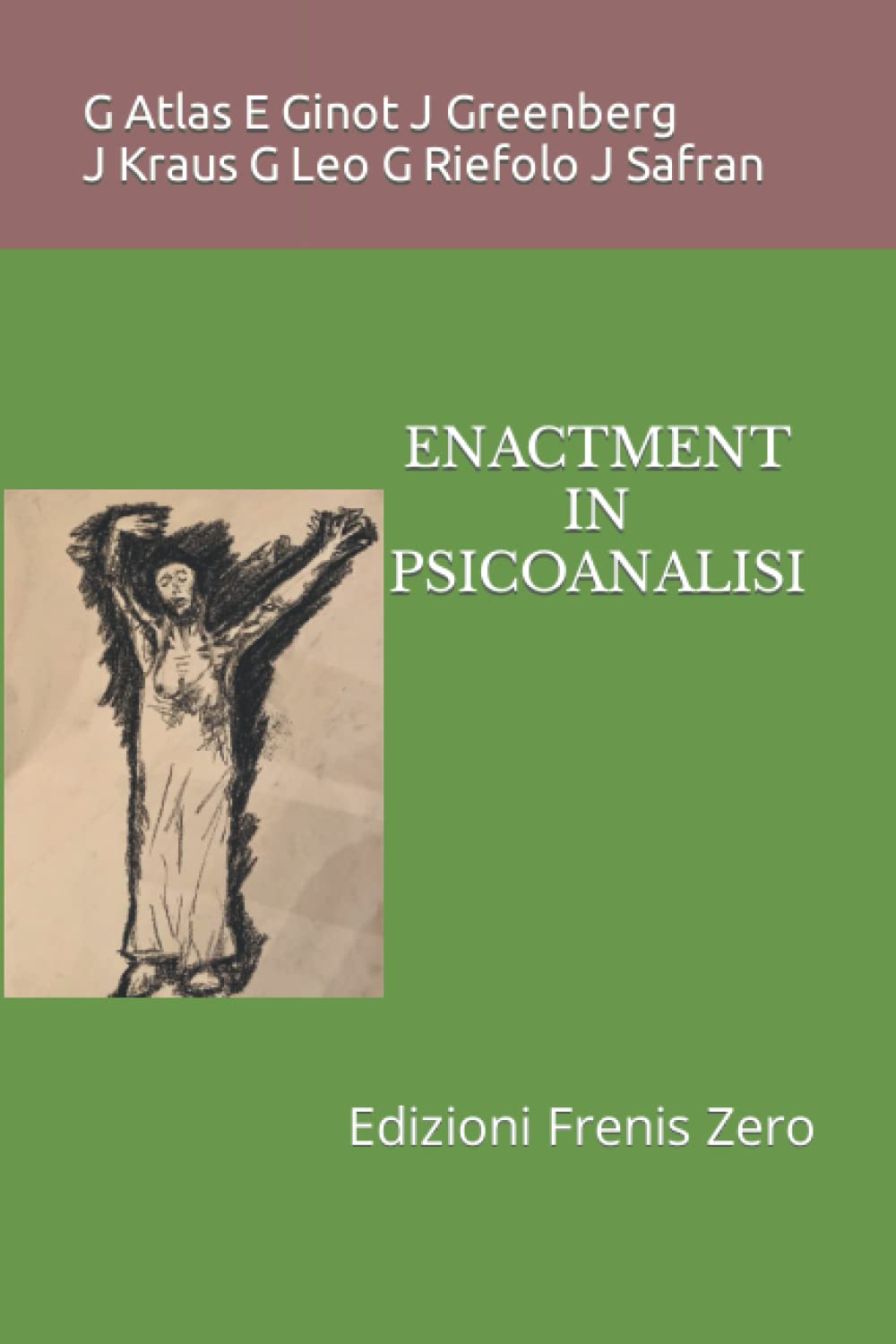
A
cura di Giuseppe Leo & Giuseppe
Riefolo
Scritti
di: Galit Atlas Efrat Ginot
Jay Greenberg Jessica Kraus
Giuseppe Leo Giuseppe Riefolo
Jeremy Safran
Editore:
Frenis Zero
Collana:
Confini della Psicoanalisi
Anno:
2022
Pages:
320
ISBN: 978-88-97479-34-5
Click
here to buy the book/Compra su Amazon

"Neuroscience and Psychoanalysis"
(2nd Edition)
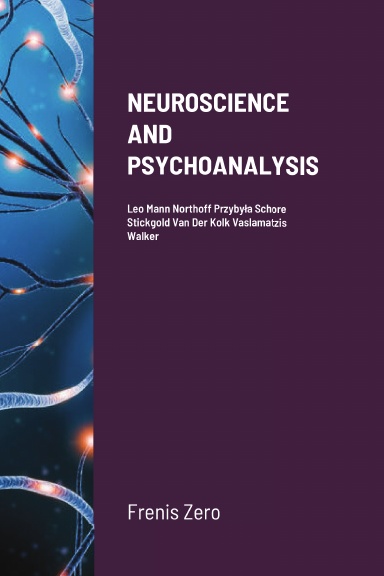
Edited
by Giuseppe Leo
Writings
by: D. Mann G.Northoff
J. Przybyła A. N. Schore
R. Stickgold B.A. Van Der Kolk G. Vaslamatzis M.P. Walker
Publisher:
Frenis Zero
Collection:
Psychoanalysis and Neuroscience
Year:
2021
Pages:
322
ISBN: 978-88-97479-30-7
Click
here to buy the book/Compra su Lulu

"Blown Lives. A Tale for Spielrein,
Gross, Tausk and the other losers of psychoanalysis" by
Giuseppe Leo
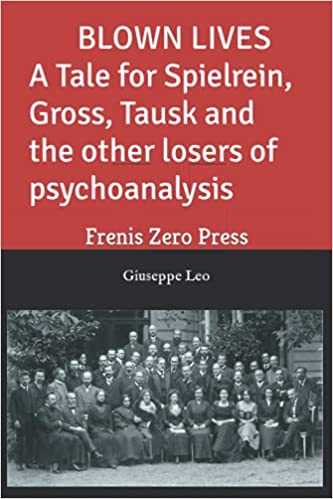
Editore/Publisher: Edizioni Frenis Zero
ISBN: 978-88-97479-32-1
Anno/Year: 2021
Pages: 284
Click
here to buy the book/Compra su Amazon

"My
Ideas Felt Like Outsize Clothes. A tale for Etty Hillesum"
(Second Edition)
by
Giuseppe Leo
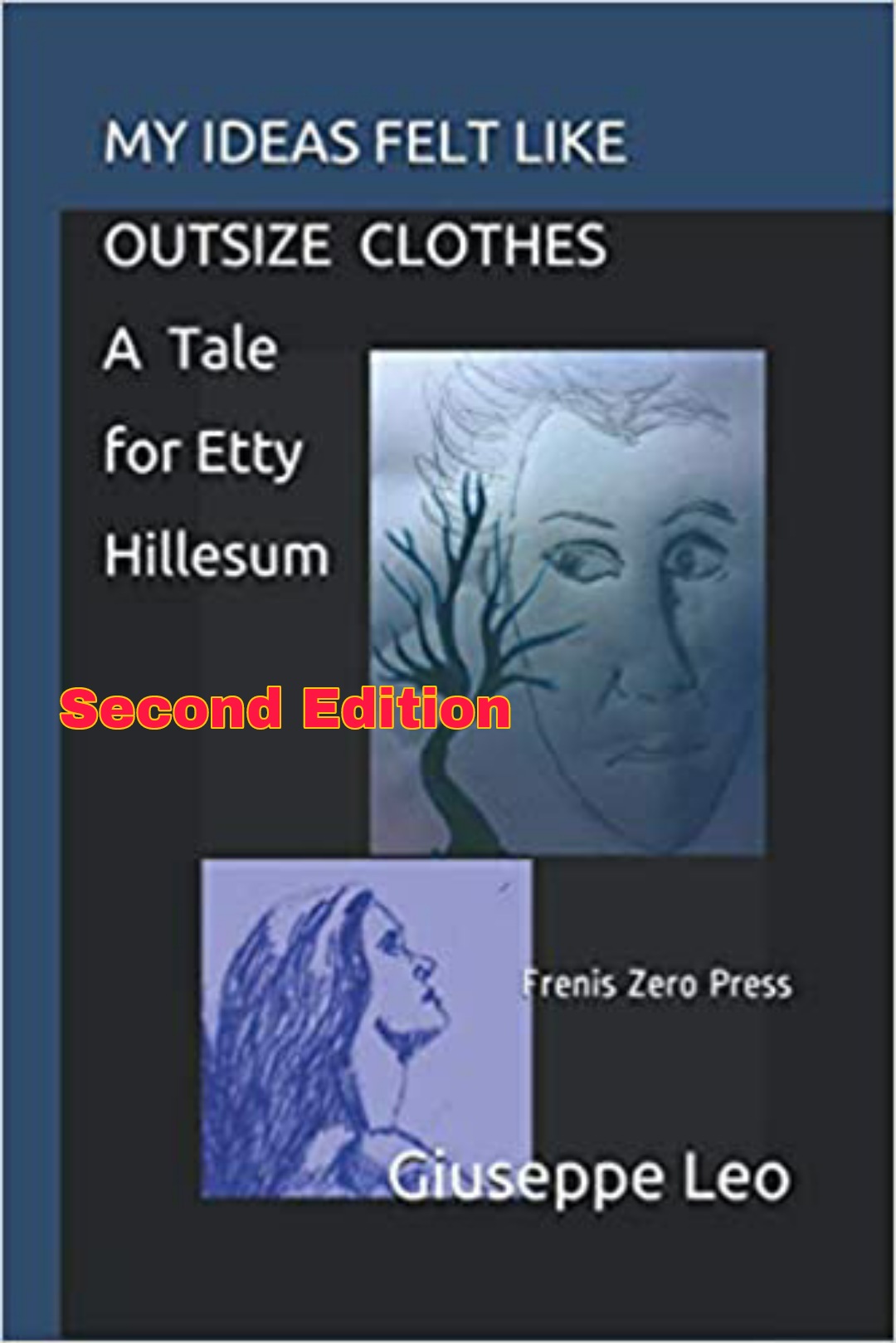
Editore/Publisher: Edizioni Frenis Zero
ISBN: 978-88-97479-28-4
Anno/Year: 2021
Pages: 128
Click
here to buy the book/Compra su Amazon

"Infant
Research and Psychoanalysis" (Third Edition) edited
by Giuseppe Leo
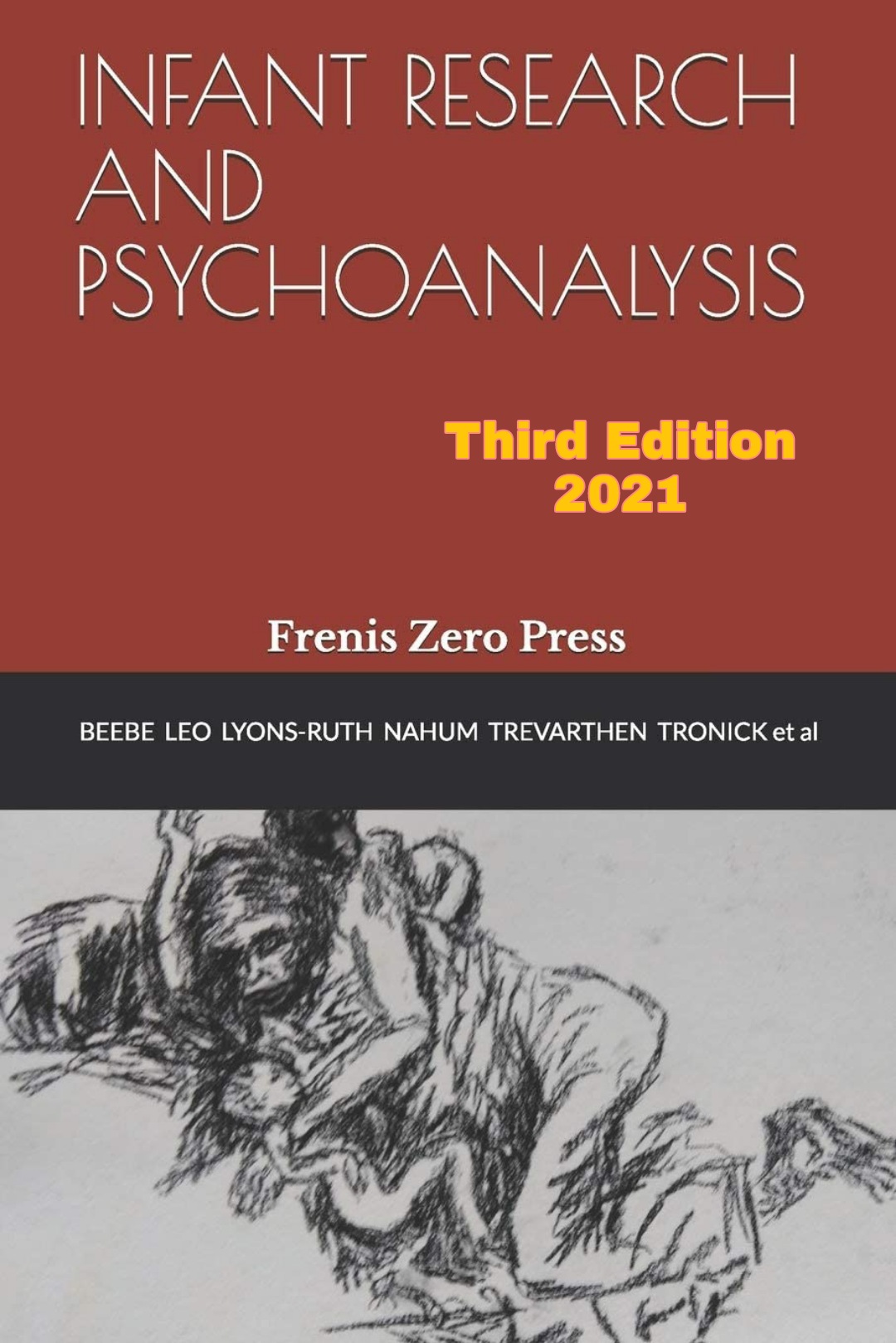
"
Edited
by Giuseppe Leo
Writings
by: B. Beebe K.
Lyons-Ruth J. P. Nahum D. Schechter
E. Solheim C.
Trevarthen E. Z. Tronick
L.
Vulliez-Coady
Publisher:
Frenis Zero
Collection:
Borders of Psychoanalysis
Year:
2021
Pages:
285
ISBN: 978-88-97479-24-6
Click
here to buy the book/Compra su Amazon

"Psychanalyse,
Lieux de Mémoire et Traumatismes Collectifs" (Third
Edition) edited by
Giuseppe Leo
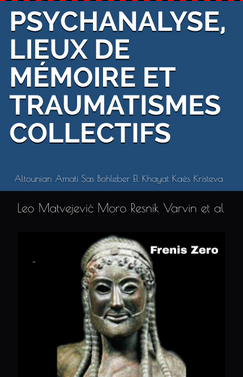
Writings by: J. Altounian, S. Amati Sas, W.
Bohleber, M. El Husseini, R. El Khayat, Y. Gampel R. Kaës, J.
Kristeva, G. Leo, A. Loncan, P. Matvejević, M.-R. Moro, S.
Resnik, S. Varvin
Editore/Publisher: Edizioni Frenis Zero
ISBN: 978-88-97479-22-2
Anno/Year: 2021
Pages: 546
Click
here to buy the book/Compra su Amazon

"Enactment
in Psychoanalysis" - Second Edition) edited by
Giuseppe Leo & Giuseppe Riefolo
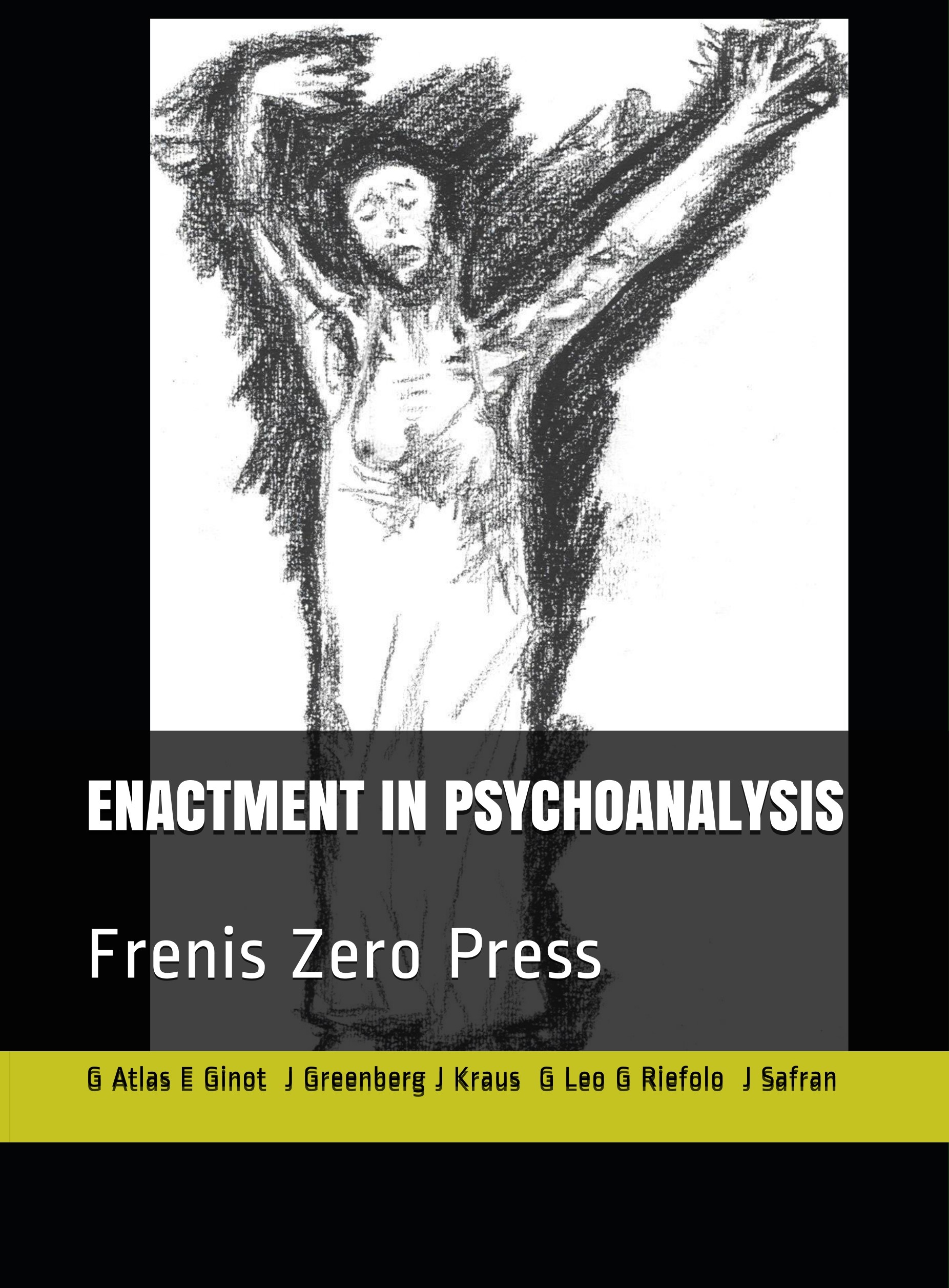
Edited
by Giuseppe Leo & Giuseppe Riefolo
Writings
by: G. Atlas E. Ginot J.R.
Greenberg J. Kraus J.D. Safran
Publisher:
Frenis Zero
Collection:
Borders of Psychoanalysis
Year:
2020
Pages:
333
ISBN: 978-88-97479-19-2
Click
here to buy the book/Compra su Amazon

"My
Ideas Felt Like Outsize Clothes. A tale for Etty Hillesum" by
Giuseppe Leo
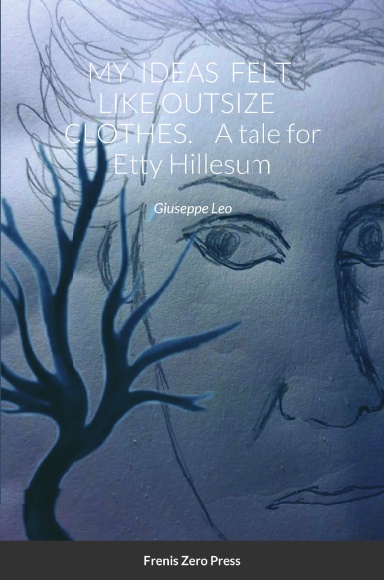
Editore/Publisher: Edizioni Frenis Zero
ISBN: 978-88-97479-33-8
Anno/Year: 2020
Pages: 122
Click
here to order the book/Ordina
su Lulu

"Environmental
Crisis and Pandemic. A Challenge for Psychoanalysis"
edited by Giuseppe Leo (Second
Edition)

Writings by: H. Catz, A. Ferruta,
M. Francesconi, P. R. Goisis, R. D. Hinshelwood, G.
Leo, N. McWilliams,
G. Riefolo, M. Roth, C.
Schinaia, D. Scotto Di Fasano, R. D. Stolorow
Editore/Publisher: Edizioni Frenis Zero
ISBN: 978-88-97479-37-6
Anno/Year: 2020
Pages: 312
Click
here to order the book/Ordina
su Lulu

Click
here to buy the book/Compra su Amazon

"Psychanalyse,
Lieux de Mémoire et Traumatismes Collectifs" sous
la direction de Giuseppe Leo
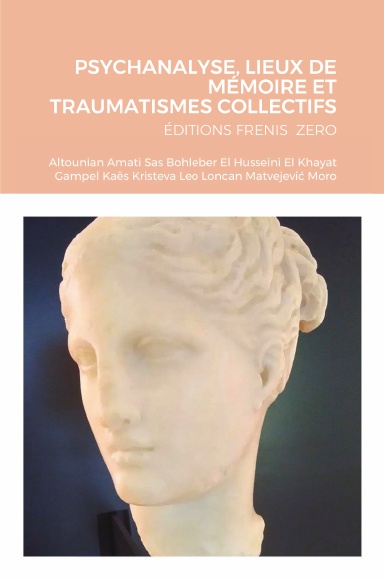
Writings by: J. Altounian, S. Amati Sas, W.
Bohleber, M. El Husseini, R. El Khayat, Y. Gampel R. Kaës, J.
Kristeva, G. Leo, A. Loncan, P. Matvejević, M.-R. Moro
Editore/Publisher: Edizioni Frenis Zero
ISBN: 978-88-97479-29-1
Anno/Year: 2020
Pages: 482
Click
here to order the book/Ordina
su Lulu

"Fear
of Lockdown. Psychoanalysis, Pandemic Discontents and
Climate Change"
edited by Giuseppe Leo
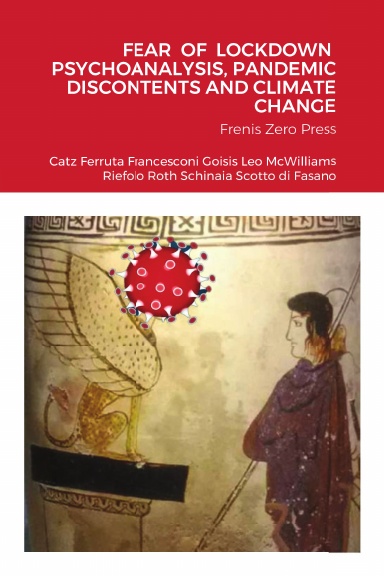
Writings by: H. Catz, A. Ferruta,
M. Francesconi, P. R. Goisis, G.
Leo, N. McWilliams,
G. Riefolo, M. Roth, C.
Schinaia, D. Scotto Di Fasano
Editore/Publisher: Edizioni Frenis Zero
ISBN: 978-88-97479-21-5
Anno/Year: 2020
Pages: 295
Click
here to order the book/Ordina
su Lulu

Click
here to buy the book/Compra su Amazon

"Rock
Music & Psychoanalysis"
Second Edition
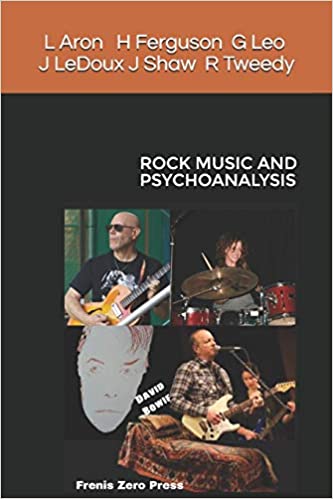
Edited
by: Giuseppe Leo
Authored
by/autori: Lewis Aron Heather
Ferguson Joseph LeDoux Giuseppe Leo John Shaw
Rod Tweedy
Editore/Publisher:
Edizioni Frenis Zero
Collection/Collana: Borders
of Psychoanalysis
Anno/Year:
2020
Pagine/Pages:
221
ISBN:978-88-97479-35-2
Click
here to buy the book/Compra su Amazon

"Essere
nella cura"

Authored
by/autori: Giacomo Di Marco & Isabella
Schiappadori
Editore/Publisher:
Edizioni Frenis Zero
Collection/Collana: Confini
della Psicoanalisi
Anno/Year:
2019
Pagine/Pages:
210
ISBN:978-88-97479-17-8
Click
here to order the book
"Enactment
in Psychoanalysis"
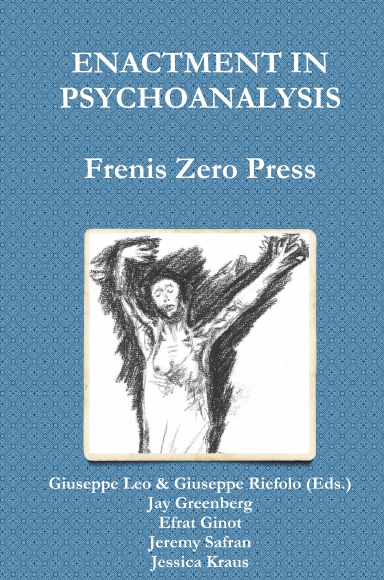
Edited
by Giuseppe Leo & Giuseppe Riefolo
Writings
by: E. Ginot J.R.
Greenberg J. Kraus J.D. Safran
Publisher:
Frenis Zero
Collection:
Borders of Psychoanalysis
Year:
2019
Pages:
326
ISBN: 978-88-97479-15-4
Click
here to order the book
"Infant
Research and Psychoanalysis"

Edited
by Giuseppe Leo
Writings
by: B. Beebe K.
Lyons-Ruth J. P. Nahum E. Solheim C.
Trevarthen E. Z. Tronick L.
Vulliez-Coady
Publisher:
Frenis Zero
Collection:
Borders of Psychoanalysis
Year:
2018
Pages:
273
ISBN: 978-88-97479-14-7
Click
here to order the book
"Fundamentalism
and Psychoanalysis"
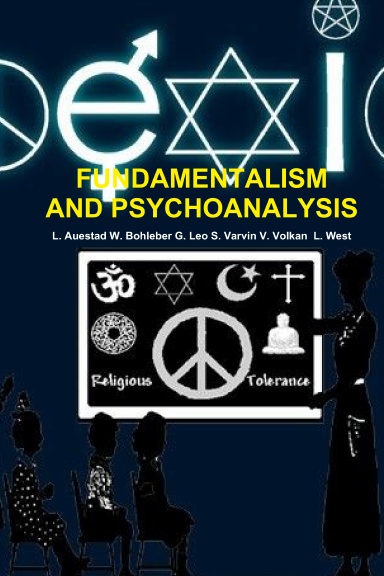
Edited
by Giuseppe Leo
Prefaced
by: Vamik D. Volkan
Writings
by: L. Auestad W.
Bohleber S. Varvin L. West
Publisher:
Frenis Zero
Collection:
Mediterranean Id-entities
Year:
2017
Pages:
214
ISBN: 978-88-97479-13-0
Click
here to order the book
"Psicoanalisi, luoghi della resilienza
ed immigrazione"

Edited
by/a cura di: Giuseppe Leo
Writings by/scritti di:
S.
Araùjo Cabral, L.
Curone,
M. Francesconi,
L.
Frattini,
S.
Impagliazzo,
D. Centenaro Levandowski, G. Magnani, M. Manetti, C. Marangio,
G. A. Marra e Rosa, M. Martelli,
M. R. Moro, R. K. Papadopoulos,
A. Pellicciari,
G. Rigon,
D.
Scotto di Fasano,
E. Zini, A. Zunino
Editore/Publisher: Edizioni Frenis Zero
Collection/Collana: Mediterranean
Id-entities
Anno/Year:
2017
Pagine/Pages:
372
ISBN:978-88-97479-11-6
Click
here to order the book
"Psicoanalisi in Terra Santa"

Edited
by/a cura di: Ambra Cusin & Giuseppe Leo
Prefaced by/prefazione
di:
Anna Sabatini Scalmati
Writings by/scritti di:
H. Abramovitch A. Cusin M. Dwairy
A. Lotem M.
Mansur M. P. Salatiello Afterword
by/ Postfazione
di:
Ch. U. Schminck-Gustavus
Notes by/ Note di: Nader Akkad
Editore/Publisher: Edizioni Frenis Zero
Collection/Collana: Mediterranean
Id-entities
Anno/Year:
2017
Pagine/Pages:
170
ISBN:978-88-97479-12-3
Click
here to buy the book
"Essere bambini a Gaza. Il trauma
infinito"

Authored
by/autore: Maria Patrizia Salatiello
Editore/Publisher: Edizioni Frenis Zero
Collection/Collana: Mediterranean
Id-entities
Anno/Year:
2016
Pagine/Pages:
242
ISBN:978-88-97479-08-6
Click
here to buy the book
Psychoanalysis,
Collective Traumas and Memory Places (English Edition)

Edited
by/a cura di: Giuseppe Leo Prefaced by/prefazione
di:
R.D.Hinshelwood
Writings by/scritti di: J. Altounian
W. Bohleber J. Deutsch
H. Halberstadt-Freud Y. Gampel
N. Janigro R.K. Papadopoulos
M. Ritter S. Varvin H.-J. Wirth
Editore/Publisher: Edizioni Frenis Zero
Collection/Collana: Mediterranean
Id-entities
Anno/Year:
2015
Pagine/Pages:
330
ISBN:978-88-97479-09-3
Click
here to buy the book
"L'uomo
dietro al lettino" di
Gabriele Cassullodi
Gabriele Cassullodi
Gabriele Cassullo

Prefaced
by/prefazione di: Jeremy
Holmes
Editore/Publisher: Edizioni Frenis Zero
Collection/Collana: Biografie
dell'Inconscio
Anno/Year:
2015
Pagine/Pages:
350
ISBN:978-88-97479-07-9
Click
here to order the book
"Neuroscience
and Psychoanalysis" (English Edition)

Edited by/a cura di: Giuseppe Leo
Prefaced by/prefazione
di: Georg Northoff
Writings by/scritti di: D. Mann A. N. Schore
R. Stickgold
B.A. Van Der Kolk
G. Vaslamatzis M.P. Walker
Editore/Publisher: Edizioni Frenis Zero
Collection/Collana: Psicoanalisi e neuroscienze
Anno/Year: 2014
Pagine/Pages: 300
ISBN:978-88-97479-06-2
Click
here to order the book
Vera
Schmidt, "Scritti su psicoanalisi infantile ed
educazione"

Edited by/a cura di: Giuseppe Leo
Prefaced by/prefazione
di: Alberto Angelini
Introduced by/introduzione di: Vlasta Polojaz
Afterword by/post-fazione di: Rita Corsa
Editore/Publisher: Edizioni Frenis Zero
Collana: Biografie dell'Inconscio
Anno/Year: 2014
Pagine/Pages: 248
ISBN:978-88-97479-05-5
Click
here to order the book
Resnik,
S. et al. (a cura di Monica Ferri), "L'ascolto dei
sensi e dei luoghi nella relazione terapeutica"

Writings by:A.
Ambrosini, A. Bimbi, M. Ferri,
G. Gabbriellini, A. Luperini, S. Resnik,
S. Rodighiero, R. Tancredi, A. Taquini Resnik,
G. Trippi
Editore/Publisher: Edizioni Frenis Zero
Collana: Confini della Psicoanalisi
Anno/Year: 2013
Pagine/Pages: 156
ISBN:978-88-97479-04-8
Click
here to order the book
Silvio
G. Cusin, "Sessualità e conoscenza"

A cura di/Edited by: A. Cusin & G. Leo
Editore/Publisher: Edizioni Frenis Zero
Collana/Collection: Biografie dell'Inconscio
Anno/Year: 2013
Pagine/Pages: 476
ISBN: 978-88-97479-03-1
Click
here to order the book
AA.VV.,
"Psicoanalisi e luoghi della riabilitazione", a cura
di G. Leo e G. Riefolo (Editors)
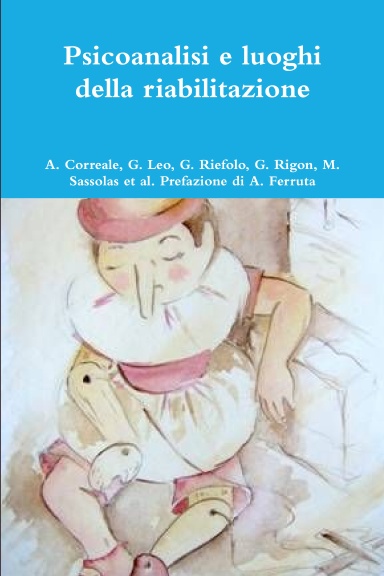
A cura di/Edited by: G. Leo & G. Riefolo
Editore/Publisher: Edizioni Frenis Zero
Collana/Collection: Id-entità mediterranee
Anno/Year: 2013
Pagine/Pages: 426
ISBN: 978-88-903710-9-7
Prezzo/Price:
€ 39,00
Click
here to order the book
AA.VV.,
"Scrittura e memoria", a cura di R. Bolletti (Editor)

Writings by: J.
Altounian, S. Amati Sas, A. Arslan, R. Bolletti, P. De
Silvestris, M. Morello, A. Sabatini Scalmati.
Editore/Publisher: Edizioni Frenis Zero
Collana: Cordoglio e pregiudizio
Anno/Year: 2012
Pagine/Pages: 136
ISBN: 978-88-903710-7-3
Click
here to order the book
AA.VV., "Lo
spazio velato. Femminile e discorso
psicoanalitico"
a cura di G. Leo e L. Montani (Editors)

Writings by: A.
Cusin, J. Kristeva, A. Loncan, S. Marino, B.
Massimilla, L. Montani, A. Nunziante Cesaro, S.
Parrello, M. Sommantico, G. Stanziano, L.
Tarantini, A. Zurolo.
Editore/Publisher: Edizioni Frenis Zero
Collana: Confini della psicoanalisi
Anno/Year: 2012
Pagine/Pages: 382
ISBN: 978-88-903710-6-6
Click
here to order the book
AA.VV., Psychoanalysis
and its Borders, a cura di
G. Leo (Editor)
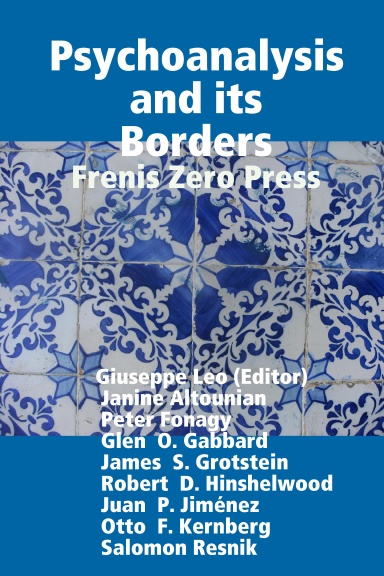
Writings by: J. Altounian, P.
Fonagy, G.O. Gabbard, J.S. Grotstein, R.D. Hinshelwood, J.P.
Jimenez, O.F. Kernberg, S. Resnik.
Editore/Publisher: Edizioni Frenis Zero
Collana/Collection: Borders of Psychoanalysis
Anno/Year: 2012
Pagine/Pages: 348
ISBN: 978-88-974790-2-4
Click
here to order the book
AA.VV.,
"Psicoanalisi e luoghi della negazione", a cura di A.
Cusin e G. Leo
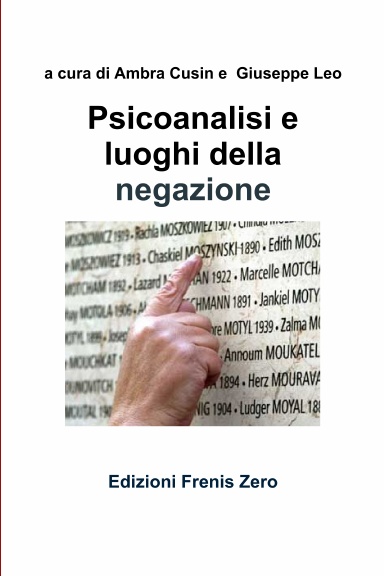
Writings by:J.
Altounian, S. Amati Sas, M. e M. Avakian, W. A.
Cusin, N. Janigro, G. Leo, B. E. Litowitz, S. Resnik, A.
Sabatini Scalmati, G. Schneider, M. Šebek,
F. Sironi, L. Tarantini.
Editore/Publisher: Edizioni Frenis Zero
Collana/Collection: Id-entità mediterranee
Anno/Year: 2011
Pagine/Pages: 400
ISBN: 978-88-903710-4-2
Click
here to order the book
"The Voyage Out" by Virginia
Woolf

Editore/Publisher: Edizioni Frenis Zero
ISBN: 978-88-97479-01-7
Anno/Year: 2011
Pages: 672
Click
here to order the book
"Psicologia
dell'antisemitismo" di Imre Hermann

Author:Imre Hermann
Editore/Publisher: Edizioni Frenis Zero
ISBN: 978-88-903710-3-5
Anno/Year: 2011
Pages: 158
Click
here to order the book
"Vite soffiate. I vinti della
psicoanalisi" di Giuseppe Leo

Editore/Publisher: Edizioni Frenis Zero
Edizione: 2a
ISBN: 978-88-903710-5-9
Anno/Year: 2011
Click
here to order the book
"La Psicoanalisi e i suoi
confini" edited by Giuseppe Leo

Writings by: J.
Altounian, P. Fonagy, G.O. Gabbard, J.S. Grotstein, R.D.
Hinshelwood, J.P. Jiménez, O.F. Kernberg, S. Resnik
Editore/Publisher: Astrolabio Ubaldini
ISBN: 978-88-340155-7-5
Anno/Year: 2009
Pages: 224
Prezzo/Price: € 20,00
"La Psicoanalisi. Intrecci Paesaggi
Confini"
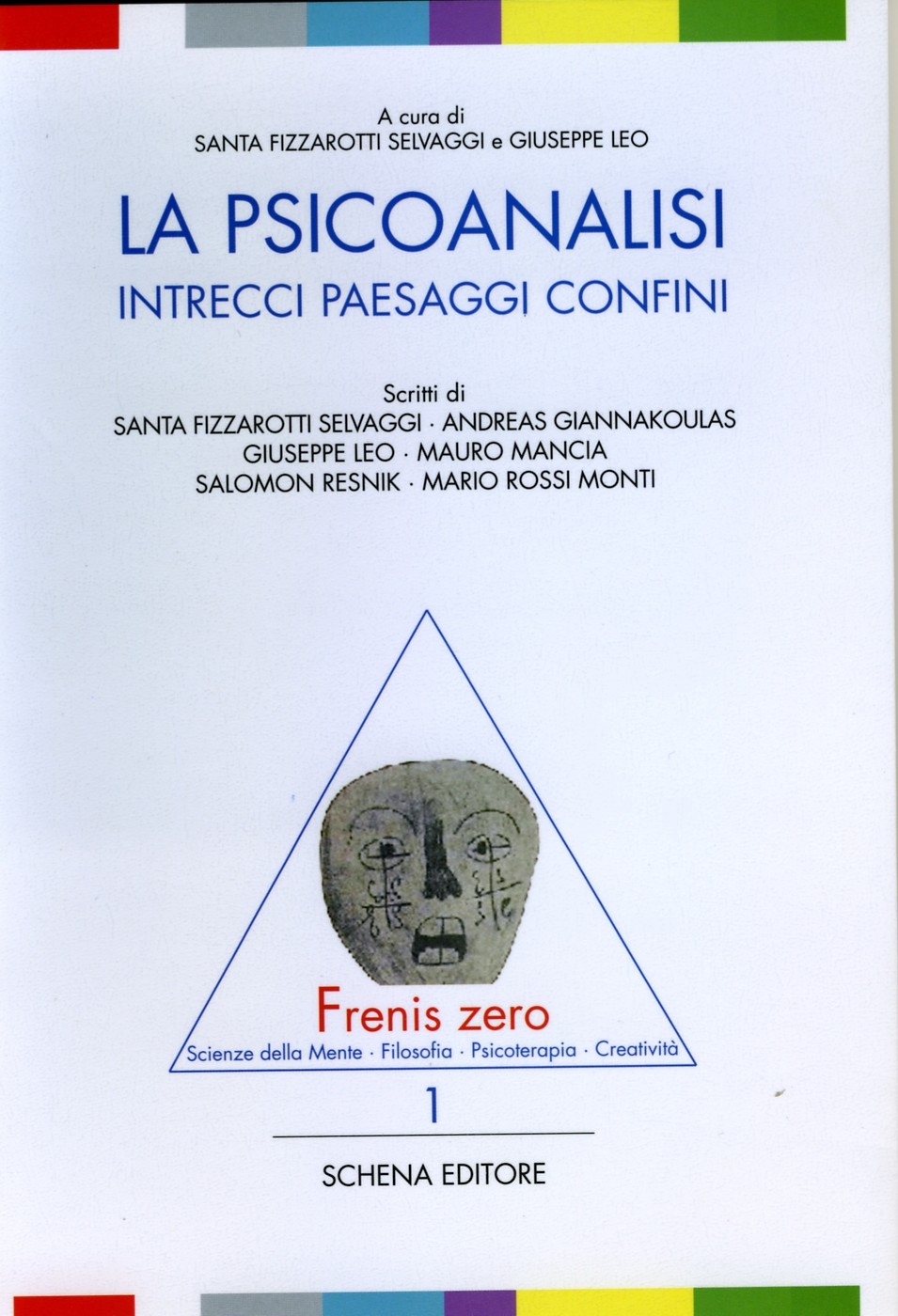
Edited by S. Fizzarotti Selvaggi, G.Leo.
Writings by: Salomon Resnik, Mauro Mancia, Andreas Giannakoulas,
Mario Rossi Monti, Santa Fizzarotti Selvaggi, Giuseppe Leo.
Publisher: Schena Editore
ISBN 88-8229-567-2
Price: € 15,00
Click here to order the
book |
|
Ad
un primo sguardo può sembrare strano discutere gli enactment
terapeutici come una potenziale fonte di empatia. Sebbene
concettualmente questi due processi interpersonali appaiono occupare
polarità opposte, in realtà essi sono processi intersoggettivi tra
loro correlati. Dato che implicano scambi emotivi intensi, sia gli
enactment che l’empatia costituiscono importanti pilastri in
qualsiasi processo terapeutico. Come vedremo, analogamente
all’empatia, gli enactment sono una forma di mutua risonanza, in cui
entrambi i partecipanti riecheggiano l’uno gli stati interni
dell’altro. E sebbene il contesto possa essere quello di un
conflitto e di una lotta – una rottura nell’alleanza terapeutica (Safran,
1993) – gli elementi
intersoggettivi sottostanti agli enactment comprendono anche per essi
una modalità non mediata di rispondere e di accedere
all’”altro”.
Ciò che conferisce all’empatia il suo potere interpersonale
di “sentire” l’altro è la risonanza affettiva (Mühlhoff,
2015), la sintonizzazione affettiva (Stern, 1985), la
mentalizzazione (Fonagy, 2008) ed i comportamenti che li possono
accompagnare. è degno di nota il fatto che ci sono circuiti cerebrali
innati che mediano i sentimenti di empatia (Decety et al., 2016;
Gallese, 2009). L’empatia incarna, quindi, la coordinazione
inconscia e l’espressione del linguaggio, il movimento sincronizzato
(Scheidt et al., 2021) e gli stati emotivi. È anche un processo
intersoggettivo per eccellenza. Analogamente,
sebbene spesso occupino un ambito riservato agli stati emotivi
problematici, gli enactment esprimono anche complesse comunicazioni
consce-inconsce, sia verbali che non.
Inoltre, sfruttando gli aspetti inconsci sia del paziente che
del terapeuta, gli enactment possono anche presentare l’opportunità
di una comprensione empatica degli stati del sé caratterizzati da
vissuti di ansia e dal sentirsi feriti. Il punto di partenza consiste
nella nozione che, come tutti gli intrecci interpersonali, gli
enactment rivelano i modelli relazionali ed emotivi impliciti dei
partecipanti. Tali stati del sé inconsci inevitabilmente prendono
vita all’interno della diade analitica, e di ogni altra relazione.
Si è suggerito che l’ autoconsapevolezza dell’analista sul
proprio contributo e partecipazione, a seguito della
‘self-disclosure’ della propria esperienza, possa generare una
risonanza empatica verso il paziente. Una tale azione da parte
dell’analista può promuovere una comprensione conscia, espressa
verbalmente e in modo compassionevole, delle tendenze interne del
paziente così come delle proprie.
LA
NATURA DEGLI ENACTMENT
Gli
enacment possono essere descritti come sistemi del sé reciprocamente
riattivati oppure come schemi relazionali impliciti sia del paziente
che dell’analista. Ed in quanto tali essi servono da porta per
accedere nei sistemi del sé emotivi, relazionali e comportamentali
inconsci del paziente.
Spesso descritti come ‘impasse’ relazionali, gli enactment
possono creare un campo intersoggettivo in cui sia il paziente che
l’analista si trovino in un coinvolgimento emotivo continuo che
temporaneamente diminuisce la probabilità di riflettere in modo
significativo (Aron, 1996; Bromberg, 2006, 2011; Chused, 1998; Mann,
2009, Maroda, 1991; D. B. Stern, 2010; D. N. Stern, 2004). Ciò che
era uno sforzo collaborativo cosciente può sembrare a rischio di
collassare sotto il peso di sentimenti e comportamenti problematici,
minacciosi ed apparentemente inspiegabili sia nel paziente che
nell’analista.
Nei casi più estremi, in quanto rotture gravi che minacciano
l’alleanza terapeutica, gli enactment possono bloccare completamente
il processo analitico. Che si verifichino in modo improvviso o
insidioso, presto o tardi nel corso della terapia, che durino a lungo
o per breve tempo, gli enactment sono quasi sempre una sorpresa ed una
minaccia per l’alleanza terapeutica. Derivando da continue o
improvvise percezioni e (distorte) interpretazioni intersoggettive,
l’enactment può assumere la forma di un confronto o di un ritiro
(si veda Safran, 2017).
Essi possono includere sentimenti di essere stati feriti
provenienti da entrambi i partecipanti, di crescente sfiducia oppure,
in alternativa, un’atmosfera mortifera e soffocante di star fermi e
non in movimento. Possiamo affermare che gli enactment indicano che
qualcosa è ‘fuori sincrono’. Questo “qualcosa”, comunque, può
aprire la porta ad importanti processi di consapevolezza, di
comprensione ed in questo modo offrire nuove modalità di vedere e di
comprendere l’altro. Questo è un tipo differente di empatia; non
riguardante la mentalizzazione bensì l’esperienza emotiva e la
reazione alle paure e difese più nascoste dell’altro.
Il focus sugli enactment, come modalità per
meglio afferrare il potere dei modelli relazionali inconsci, riflette
il riconoscimento che il contenuto esplicito e le interpretazioni
verbali sono risorse insufficienti per comprendere i pazienti. Schore
(2012) ha sottolineato questo cambio di paradigma da modalità solo
verbali di relazionarsi e comprendere l’altro alla responsività
emotiva non mediata. Dato che paziente e terapeuta diventano parte di
un campo intersoggettivo invischiato, essi generano una potente
modalità di comunicazione inconscia. Durante un enactment, al di
fuori della consapevolezza, entrambi sollecitano e rispondono a
fattori scatenanti personali che portano alla disregolazione
all’interno della diade.
In realtà, gli enactment sono intense manifestazioni di
intrecci transfero-controtransferali. Inevitabilmente tali
comunicazioni male interpretate, tali percezioni travisate e tali
credenze distorte riguardanti l’altro producono un’ampia gamma di
reazioni interne ed interpersonali. Tali reazioni esprimono
automaticamente vecchie ferite e rigide difese che sono state
utilizzate per far fronte a queste. Possiamo dire che le risposte del
paziente al terapeuta e le reazioni dello stesso terapeuta pongono le
basi per accedere direttamente e non verbalmente al mondo
rappresentazionale del paziente. In questo modo, gli enactment ci
portano oltre il transfert e le interpretazioni, e ci forniscono una
nuova considerazione di ciò che significa conoscere l’altro.
GLI
ENACTMENT COME COMUNICATORI DI SISTEMI RELAZIONALI
Bromberg
(Chefetz & Bromberg, 2004) parla dell’enactment come dello
sforzo del paziente di negoziare stati del sé dissociati che, a causa
di esperienze traumatiche, non sono simbolizzate a livello verbale.
Analogamente, D. B. Stern (2010) come anche Maroda (1991) considerano
l’enactment come la manifestazione interpersonale di stati del sé
dissociati e non formulati a cui non è concesso di entrare in
conflitto con quelli consci. I loro punti di vista, permeati di tanta
esperienza clinica e di tanti incontri coi pazienti, sono pienamente
in accordo con la visione dell’inconscio come costituito da processi
integrati del cervello/mente/corpo in azione. Nella visione di
Bromberg gli stati del sé dissociati non hanno “nessuna scelta”
se non quella di coinvolgersi con gli altri e di rivelarsi. In
effetti, una tale nozione va di pari passo con le recenti scoperte che
descrivono i processi neuropsicologici che automaticamente e al di
fuori della consapevolezza generano la messa in azione (enactment) di
circuiti o mappe neurali inconsce, dando così voce ai modelli
consolidati del cervello/mente.
Bromberg considera le
inevitabili impasse relazionali che
accompagnano gli enactment. Ma egli li vede anche come una
comunicazione inconscia il cui messaggio reale diretto all’analista
è quello di farlo coinvolgere con il paziente in modo autentico e
veritiero. Un tale coinvolgimento, alla base del controtransfert
dell’analista, può aiutare sia il paziente che l’analista a
riconoscere e risolvere modelli dolorosi di attaccamento con tutte le
loro paure e difese. Come sappiamo, uno dei più grandi benefici
dell’analisi e della psicoterapia è il processo di riconoscere ed
identificare modelli che non funzionano più, ma che creano problemi
ripetuti nella vita del paziente. Se lasciati non individuati e non
soggetti a riflessione, tali modelli consci-inconsci sono destinati a
ripetersi e ad essere automaticamente ed inconsciamente messi in atto
(‘enacted’) (Bucci, 2011; Chefetz & Bromberg, 2004; Chused,
1998; Ginot, 2009, 2015; Jacobs, 1991; Pizer, 2003; Renik, 1998).
(fine
prima parte)
BIBLIOGRAFIA
Aron, L. (1996). A
meeting of minds: Mutuality in psychoanalysis. Hillsdale, NJ:
Analytic Press.
Bargh, J. A. (2014). Our unconscious mind. Scientific
American, 310, 30–38.
Beebe, B. (2010). Mother-infant research informs
mother-infant treatment. Clinical
Social Work Journal, 38, 17–36.
Beebe, B., and Lachmann, F. (2002). Infant research and adult treatment: Co-constructing interactions.
Hillsdale, NJ: Analytic Press.
Borghi, A. M., and Cimatti, F. (2010). Embodied cognition
and beyond: Acting and sensing the body. Neuropsychologia,
48, 763–73.
Bromberg, P. M. (1998). Standing
in the spaces: Essays on clinical process, trauma and dissociation.
Hillsdale, NJ: Analytic Press.
Bromberg, P. M. (2006). Awakening
the dreamer: Clinical journeys. Mahwah, NJ: Analytic Press.
Bromberg, P. M. (2011). The
shadow of the tsunami and the growth of the relational mind.
London: Routledge.
Bucci, W. (2011). The interplay of subsymbolic and symbolic
processes in psychoanalytic treatment: It takes two to tango—but who
knows the steps, who’s the leader? The choreography of
psychoanalytic interchange. Psychoanalytic
Dialogues, 21, 45–54.
Carr, L., Iacoboni, M., Dubeau, M., Mazziotta, J. C., and
Lenzi, G. L. (2003). Neural mechanisms of empathy in humans: A relay
from neural systems for imitation to limbic area. Lexique, 100, 5497–502.
Chefetz, R. A., and Bromberg, P. M.
(2004). Talking with “me” and not “me”: A dialogue. Contemporary Psychoanalysis, 40, 409–64.
Churchland, P. S. (2013). Touching a nerve: The self as brain. New York: Norton.
Chused, J. F. (1998). The evocative power of enactment. In
S. J. Ellman and M. Moskowitz (eds.), Enactment:
Toward a new approach to the therapeutic relationship (pp.
93–109). Northvale, NJ: Aronson.
Cozolino, L. (2006). The
neuroscience of human relationships: Attachment and the developing
brain. New York: Norton.
Damasio, A. R. (2010). Self
comes to mind: Constructing the conscious brain. New York: Vintage
Press.
Dapretto, M., Davis, M. S., Pfeifer, J. H., Scott, A. A.,
Sigman, M., Bookheimer, S. Y., and Iacoboni, M. (2006). Understanding
emotions in others: Mirror neuron dysfunction in children with autism
spectrum disorders. Nature
Neuroscience, 9, 28–31.
Diamond, D. (2004). Attachment
disorganization: The reunion of attachment theory and psychoanalysis. Psychoanalytic
Psychology, 21, 276–99.
Decety, J., Bartal, I. B., Uzefovsky,
F., and Knafo-Noam, A. (2016). Empathy as a driver of prosocial
behaviour: highly conserved neurobehavioural mechanisms across species. Philos.
Trans. R. Soc. Lond. B Biol. Sci. 371:20150077.
doi:
Fadiga, L. and Craighero, L. (2007). Cues on the origin of
language: From electrophysiological data on mirror neurons and motor
representation. In S. Braten (ed.), On
being moved: From mirror neurons
to empathy (pp. 101–10). Amsterdam: Benjamins.
Fonagy, P. (2008). The mentalization-focused approach to
social development. In F. N. Busch (ed.), Mentalization:
Theoretical considerations, research findings, and clinical
implications (pp. 3–56). New York: Analytic Press.
Fonagy, P. and Target, M. (1998). An interpersonal view of
the infant. In A. Hurry (ed.), Psychoanalysis and developmental
therapy (pp. 3–31). London: Karnac Books.
Fonagy, P., Gergely, G., Jurist, E. L., and Target, M.
(2002). Affect regulation,
mentalization and the development of the self. New York: Other
Press.
Gallese, V. (2006). Intentional attunement: Embodied
simulation and its role in social cognition. In M. Mancia (ed.), Psychoanalysis
and neuroscience (pp. 269–301). Milan: Springer.
Gallese, V. (2008). Mirror neurons and the social nature of
language: The neural exploitation hypothesis. Social Neuroscience, 3, 317–33.
Gallese, V. (2009). Mirror neurons, embodied simulation, and
the neural basis of social identification. Psychoanalytic
Dialogues, 19, 519–36.
Gallese, V., and Lakoff, G. (2005). “The brain’s
concepts: The role of the sensory-motor system in conceptual knowledge”,
Cognitive Neuropsychology,
21.
Gallese, V., Eagle, M. N. and Migone, P. (2007). Intentional
attunement: Mirror neurons and the neural underpinnings of
interpersonal relations. Journal
of the American Psychoanalytic Association, 55, 131–76.
Gazzaniga, M. S. (2008). Human: The science behind what makes us unique. New York: Harper
Collins.
Gazzaniga, M. S., Ivry, R. B., and Mangum, G. R. (2014). Cognitive
neuroscience: The biology of the mind (4th ed.). New York: Norton.
Ginot, E. (2009). The empathic power of enactments: The link
between neuropsychological processes and an expanded definition of
empathy. Psychoanalytic
Psychology, 26, 290–309 [republished in “Enactment in
Psychoanalysis”, edited by Giuseppe Leo, Frenis Zero, Lecce (Italy)].
Ginot, E. (2015). The
neuropsychology of the unconscious: Integrating brain and mind in
psychotherapy. Norton.
Ginot, E. (2022). Our
anxious selves: Neuropsychological processes and their enduring
influence on who we are. Norton.
Goldman, A. I. (2006). Simulating
minds: The philosophy, psychology, and neuroscience of mind reading.
New York: Oxford University Press.
Hari, R. (2007). Human mirroring systems: On assessing mind
by reading brain and body during social interaction. In S. Braten
(ed.), On being moved: From
mirror neurons to empathy (pp.
89–99). Philadelphia: Benjamins.
Iacoboni, M. (2007). Face to face: The neural basis of
social mirroring and empathy. Psychiatric
Annals, 37, 1–6.
Iacoboni, M. (2008). Mirroring
people: The new science of how we connect with others. New York:
Farrar, Straus and Giroux.
Iacoboni, M., Molnar-Szakacs, I., Gallese, V., Buccino, G.,
Mazziotta, J. C., and Rizzolatti, G. (2005). Grasping the intentions
of others with one’s own mirror neurons. PLoS
Biology, 3, 0001-0007.
Jacobs, T. J. (1991). The
use of self: Countertransference and communication in the analytic
situation. Madison, CT: International Universities Press.
Jurist, E. L. (2008). Minds and yours: New directions for
mentalization theory. In E. Jurist, A. Slade, and S. Bergner (eds.),
Mind to mind: Infant research, Neuroscience and Psychoanalysis, Other
Press.
LeDoux. J. (2002). Synaptic
self: How our brains become who we are. New York: Viking.
LeDoux, J. (2015). Anxious: Using
the brain to understand and treat anxiety. Penguin.
LeDoux, J. E., and Doyere, V. (2011). Emotional memory
processing: Synaptic connectivity. In S. Nalbantian, P. M. Matthews,
and J. A. McClelland (eds.), The
memory process: Neuroscientific and humanistic perspectives (pp.
153–71) Cambridge, MA: MIT Press.
Libet, B. (1985). Unconscious cerebral initiative and the
role of conscious will in voluntary actions. Behavioral and Brain Sciences, 8, 529–66.
Lyons-Ruth, K. (2003). Dissociation and the parent-infant
dialogue: A longitudinal perspective from attachment research. Journal
of the American Psychoanalytic Association, 51, 883–911.
Mancia, M. (2006). Implicit memory and unrepressed
unconscious: How they surface in the transference and in the dream. In
M. Mancia (ed.), Psychoanalysis
and neuroscience (pp.
97–123). Milan: Springer.
Mancia, M. (2007). Feeling
the words: Neuropsychoanalysis understanding of memory and the
unconscious. London: Routledge.
Mann, D. (2009). Enactments and trauma: the therapist’s
vulnerability as the theater for the patient’s trauma. In D. Mann
and V. Cunningham (eds.), The
past in the present: Therapy, enactments, and the return of trauma (pp.
8–30). New York: Routledge.
Maroda, K. J. (1991). The
power of countertransference: Innovations in analytic techniques.
New York: Wiley.
Melinda
A. Mende and Hendrikje
Schmidt. (2021). Psychotherapy in the Framework of Embodied Cognition—Does
Interpersonal Synchrony Influence Therapy Success? Front Psychiatry. 2021; 12: 562490. Published
online 2021 March.
Miller, M. L. (2008). The emotional engaged analyst I:
Theories of affect and
their influence on therapeutic action. Psychoanalytic
Psychology, 25, 3–25.
Mühlhoff
R. (2015). Affective
resonance and social interaction. Phenomenol.
Cogn. Sci. 14 1001–1019.
10.1007/s11097-014-9394-7.
Panksepp, J. and Biven, L. (2012). Archeology
of mind: The neuroevolutionary origins of human emotion. New York:
Norton.
Perani, D., Cappa, S. F., Schnur, T., Tetamanti, M., Collins,
S., Rosa, M. M., and Pazio, F. (1999). The neural correlates of verb
and noun processing: A PET study. Brain,
122, 2337–44.
Pessoa,
L. (2017). A network model of the emotional brain. Trends in
Cognitive Science, 21(5), 357–371.
Pizer, B. (2003). When
the crunch is a (k)not: A crimp in relational dialogue. Psychoanalytic Dialogues, 13, 171–92.
Ramachandran, V. S. (2011). The tell-tale brain: Unlocking the mystery of human nature. New
York: Norton.
Reznik.,
I., and Andersen, S. M. (2007). Agitation and despair in relation to
parents: Activating emotional suffering in the transference. European
Journal of Personality, 21, 281-301.
Rizzolatti, G., and Luppino, G. (2001). The cortical motor
system. Neuron, 31,
889–901.
Safran, J. D. (1993). The therapeutic alliance rupture as a
transtheoretical phenomenon: Definitional and conceptual issues. J.
Psychother. Integrat. 3, 33–49. doi: 10.1037/h0101190
Scheidt, SC. E., Pfänder,
S., Ballati, SA., Schmidt, S., and Lahmann C (2021). Language and Movement
Synchronization in Dyadic Psychotherapeutic Interaction – A
Qualitative Review and a Proposal for a Classification. Front Psychol. 2021; 12: 696448. Published
online 2021 Oct 22.
J.D. Safran. (2017). The unbearable lightness of being:
Authenticity and the search for the real, Psychoanalytic Psychology,34:
69-77.
Schore A. N. (2012). The
science of the art of psychotherapy. New York: Norton.
Stern, D. N. (1985). The
interpersonal world of the infant: A view from psychoanalysis and
developmental psychology. New York:
Basic Books.
Stern, D. N. (2004). The
present moment in psychotherapy and everyday life. New York:
Norton.
Stern, D. B. (2010). Partners
in thought: Working with unformulated experience, dissociation, and
enactment. New York: Routledge.
Stern, D. N., Sander, L. W., Nahum, J. P., Harrison, A. M.,
Lyons-Ruth, K., Morgan, S. C., Bruschweiler-Stern, N., and Tronick, E.
Z. (1998). Non-interpretive mechanisms in psychoanalytic therapy: The
“something more” than interpretation. International
Journal of Psychoanalysis, 79, 903–21.
Timmers, I., Park, A. N., and Simons, L. E. (2018). Is
empathy for pain unique in its neural
Correlates?
A meta analysis of
neuroimaging studies of empathy. Front. Behav. Neurosci., 27
November 2018.
Todd, R. M., & Manaligod, M. G. (2018). Implicit guidance of attention: The priority state space
framework. Cortex, 102, 121–138.
Varela, F., Thompson, E., and Rosch, E. (1991). The
embodied mind. Cambridge, MA: MIT Press.
Wallin, W. J. (2007). Attachment
in psychotherapy. New York: Guilford Press.
Zwiebel, R. (2004). The third position: Reflection about
internal analytic working process. Psychoanalytic
Quarterly, 73, 215–65.
XXXXXXXXXXXXXXXXXXX XXXXXXXXXXXXXXXXXXX XXXXXXXXXXXXXXXXXXX XXXXXXXXXXXXXXXXXXX XXXXXXXXXXXXXXXXXXX XXXXXXXXXXXXXXXXXXX XXXXXXXXXXXXXXXXXXX XXXXXXXXXXXXXXXXXXX XXXXXXXXXXXXXXXXXXX XXXXXXXXXXXXXXXXXXX XXXXXXXXXXXXXXXXXXX XXXXXXXXXXXXXXXXXXX XXXXXXXXXXXXXXXXXXX XXXXXXXXXXXXXXXXXXX XXXXXXXXXXXXXXXXXXX XXXXXXXXXXXXXXXXXXX XXXXXXXXXXXXXXXXXXX XXXXXXXXXXXXXXXXXXX XXXXXXXXXXXXXXXXXXX XXXXXXXXXXXXXXXXXXX XXXXXXXXXXXXXXXXXXX XXXXXXXXXXXXXXXXXXX XXXXXXXXXXXXXXXXXXX XXXXXXXXXXXXXXXXXXX XXXXXXXXXXXXXXXXXXX XXXXXXXXXXXXXXXXXXX XXXXXXXXXXXXXXXXXXX XXXXXXXXXXXXXXXXXXX XXXXXXXXXXXXXXXXXXX XXXXXXXXXXXXXXXXXXX XXXXXXXXXXXXXXXXXXX XXXXXXXXXXXXXXXXXXX XXXXXXXXXXXXXXXXXXX XXXXXXXXXXXXXXXXXXX XXXXXXXXXXXXXXXXXXX XXXXXXXXXXXXXXXXXXX XXXXXXXXXXXXXXXXXXX XXXXXXXXXXXXXXXXXXX XXXXXXXXXXXXXXXXXXX XXXXXXXXXXXXXXXXXXX XXXXXXXXXXXXXXXXXXX XXXXXXXXXXXXXXXXXXX XXXXXXXXXXXXXXXXXXX XXXXXXXXXXXXXXXXXXX XXXXXXXXXXXXXXXXXXX XXXXXXXXXXXXXXXXXXX XXXXXXXXXXXXXXXXXXX XXXXXXXXXXXXXXXXXXX XXXXXXXXXXXXXXXXXXX XXXXXXXXXXXXXXXXXXX XXXXXXXXXXXXXXXXXXX XXXXXXXXXXXXXXXXXXX XXXXXXXXXXXXXXXXXXX XXXXXXXXXXXXXXXXXXX XXXXXXXXXXXXXXXXXXX XXXXXXXXXXXXXXXXXXX XXXXXXXXXXXXXXXXXXX XXXXXXXXXXXXXXXXXXX XXXXXXXXXXXXXXXXXXX XXXXXXXXXXXXXXXXXXX XXXXXXXXXXXXXXXXXXX XXXXXXXXXXXXXXXXXXX XXXXXXXXXXXXXXXXXXX XXXXXXXXXXXXXXXXXXX XXXXXXXXXXXXXXXXXXX XXXXXXXXXXXXXXXXXXX XXXXXXXXXXXXXXXXXXX XXXXXXXXXXXXXXXXXXX XXXXXXXXXXXXXXXXXXX XXXXXXXXXXXXXXXXXXX XXXXXXXXXXXXXXXXXXX XXXXXXXXXXXXXXXXXXX XXXXXXXXXXXXXXXXXXX XXXXXXXXXXXXXXXXXXX XXXXXXXXXXXXXXXXXXX XXXXXXXXXXXXXXXXXXX XXXXXXXXXXXXXXXXXXX XXXXXXXXXXXXXXXXXXX XXXXXXXXXXXXXXXXXXX XXXXXXXXXXXXXXXXXXX XXXXXXXXXXXXXXXXXXX XXXXXXXXXXXXXXXXXXX XXXXXXXXXXXXXXXXXXX XXXXXXXXXXXXXXXXXXX XXXXXXXXXXXXXXXXXXX XXXXXXXXXXXXXXXXXXX XXXXXXXXXXXXXXXXXXX XXXXXXXXXXXXXXXXXXX XXXXXXXXXXXXXXXXXXX XXXXXXXXXXXXXXXXXXX XXXXXXXXXXXXXXXXXXX XXXXXXXXXXXXXXXXXXX XXXXXXXXXXXXXXXXXXX XXXXXXXXXXXXXXXXXXX XXXXXXXXXXXXXXXXXXX XXXXXXXXXXXXXXXXXXX XXXXXXXXXXXXXXXXXXX |
|
|
|
|
|
|
|
|
|
|
|
|
|
|
|
|
|
|
|
|
|
|
|
|
|









































